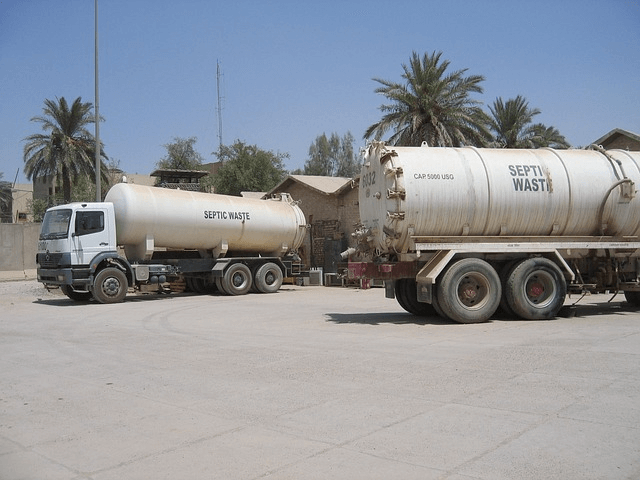The septic tank pump-out process can be complex. It’s also an activity that very few – if any – people enjoy doing, as it involves waste that many people hope never to see again.
Septic waste includes a variety of liquid waste, including raw sewage, sludge, effluent, and scum. Septic tanks act as holding tanks before this waste is pumped into a sewage system.
Any household with a septic tank should undergo regular pump-outs. The last thing anyone wants to deal with is raw sewage flowing out of their bathroom drains.
Understanding the septic tank pump-out process and the larger septic systems can help prevent this worst-case scenario.
What is a Septic Tank
Septic tanks are used to store and treat sewage or wastewater. Septic systems include one or two tanks, usually cylindrical in shape and watertight.
Wastewater from a household’s or a business’s pipes is sent into the tanks. Here, the wastewater is separated into three different forms.
- Grease, fat, and other oils float to the top and form the scum layer
- Heavier materials fall to the bottom and form into sludge. The sludge levels reflect how much of this needs to be pumped separately.
- The remaining water is called the effluent or gray water.
All of these components together are called the septage.
6 Reasons Why a Septic Tank Should be Pumped Out
Septic tanks should be pumped out to address the buildup of unremoved waste in its system.
Because septic waste can be toxic, removing it before it generates problems is best.
Here are six reasons why a septic tank must be pumped out:
1. The Smell Will Get Bad
The unpleasant smells build up. All of that scum, sludge, and effluent that the system does not process keeps building up.
A septic system must be cleaned out regularly to address foul-smelling waste buildup.
2. The Sewage System Needs Relief
The buildup can cause significant strain on pipes and the surrounding sewage system.
A failing septic tank can affect the immediate and surrounding municipal systems.
3. Wet Areas Must be Maintained
Raw sewerage can leak, causing what is known as wet areas.
These areas are great for growing plants, but they should be mapped as humans or animals should not consume the contaminated wastewater.
4. An Opportunity to Service and Re Examine the System
The filters and pumps can only be serviced when the tank is drained.
Pumping out the system allows for maintenance and other required services.
5. Helps to Maintain Household Pipes System
Household drains function with the most efficiency when the septic system is transparent.
6. Ensures a Level of Regulatory Compliance
Local Council requirements mandate it for human health and safety.
Getting a septic tank pumped out regularly is a good idea before any warning signs of leaking occur.
When To Pump Out a Septic Tank
A Septic Tank should be pumped out before it needs to be pumped out. This general rule is one of avoiding disaster situations before they form.
So, how do you know when your septic tank pump outs should occur?
Generally, it depends on the tank type, how many litres it can hold, when it was installed, and how efficient the surrounding sewerage system is.
Tunnel Vision suggests that a Septic tank should be pumped every two to five years.
However, many factors need to be considered.
For one, consider the household size that the septic tank serves. If the household is large, the septic system should be routinely monitored.
Similarly, the tanks should be monitored if the household size increases. Any additional increase in wastewater, especially effluent, can strain the septic system.
No one wants a situation where the waste flows to the wrong place!
Common Septic Tank Pump Out Process
The pump-out process occurs when a septic truck comes to service a tank. The truck connects pipes to the tank system to drain the waste completely.
The pump-out process allows for any required service to the various parts. Regular services ensure that the tank is up-to-date with the respective safety requirements.
The tank is then re-sealed until its next service.
Septic tank pump outs are part of household or business maintenance. As smelly as the process may be, it needs to be done.
Knowing why it is essential can help homeowners better understand how their septic tank functions and what the pumping out process entails.
That being said, a waste management company like Cleanway should be consulted if you are unfamiliar with the septic tank cleanout process.

